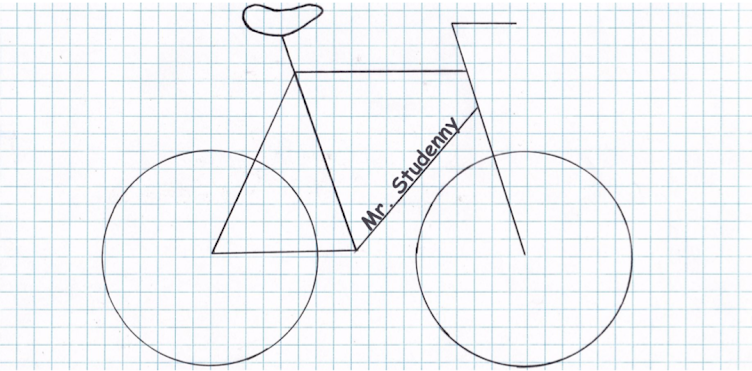?Why do We Invert and Multiply?
If you ask someone how to divide two fractions they will generally respond with the timeless rule of "invert and multiple." When I think back to my math education this was exactly how they taught me to divide fractions. It was simply instructed as one of those things you need to memorize and will always work. To be honest, I have not given it much thought since then because I easily remembered this rule and that has been good enough.
I have given a lot of thought this past week on the conceptual ideas of dividing factions, trying to wrap my mind around it. I tried not to look at literature or other explanations on building a conceptual understanding as a means to express this understanding as my own work. With that being said, I am sure there are many more complete explanations out there, but I do hope this can serve as a description of my basic understanding.
I built a better understanding of this by going through a process of different division questions with increasing complexity and looking at them conceptually. The process went from dividing whole numbers by whole numbers to whole numbers by fractions to fractions by whole numbers to simple fractions by simple fractions. I am still struggling working with the conceptual representation of the division of complex fractions, but hope the ideas of a simple fraction can be extrapolated.
Dividing whole numbers by whole numbers.
Lets look at 4÷1=4.
For this equation we have 4 whole parts divided by 1.
OR
We are looking at how many times 4 can be split into groups of one.
OR
We are looking at how many times 1 can fit into 4.
With the purpose of conceptualizing division I find it makes the most sense to look at this through third example. It is easy to visualize this idea.
Dividing whole numbers by simple fractions.
Lets look at 4÷2/3=6.
For this equation we have 4 whole parts divided by 2/3.
OR
We are looking at how many times 4 can be split into groups of 2/3s.
OR
We are looking at how many times 2/3 can fit into 4.
 |
| Figure 1 (Original Content by Author) |
Still looking at the third example we are trying to visualize 2/3 fitting into 4 wholes. This is easily expressed using circles. Figure 1 shows that you need 6 2/3's to fill the 4 wholes. For this reason the answer is 6.
Dividing simple fractions by whole numbers.
Lets look at 2/3÷4=1/6
For this equation we have 2/3 divided by 4.
OR
We are looking at how much of 2/3 can be divided into 4 groups.
OR
We are looking at how many times 4 can fit into 2/3.
 |
| Figure 2 (Original Content by Author) |
Still looking at the third example, we are trying to visualize how much of a 4 wholes will fit into a 2/3 section. Looking at it this way, we visualize the 4 wholes as one entity and the 2/3s as a second entity. We are trying to see much of the first entity fits into the second. I find this easiest to visualize using rectangles. Figure 2 shows that you need 1/6 of the 4 wholes to fill the 2/3s.
Dividing simple fractions by simple fractions.
Lets look at 3/4÷1/2=3/2
For this equation we have 3/4 divided by 1/2.
OR
We are looking at how much of 3/4 can be divided into groups sized 1/2.
OR
We are looking at how many times 1/2 can fit into 3/4.
 |
| Figure 3 (Original Content by Author) |
Again, using the third example and the same ideas we have developed in the previous section, we can tackle this problem. We look at 1/2 as one entity and the 3/4 as a second entity. We are trying too see how much of the first entity fits into the second. Again, we can use rectangles to help visualize this in Figure 3; this shows you need 3/2 of 1/2 to fill 3/4 OR 1 1/2 of 1/2 to fill 3/4.
Concluding Thoughts
I hope to continue thinking through the conceptual models of dividing fractions and revisit this post to include an evaluation of dividing complex fractions by complex fractions that I am happy with. At the current time I have not been able to articulate it in a way I feel adds to this blog.
All in all, I hope the first few examples have provided a deeper understanding in to the why and how we divide fractions.





